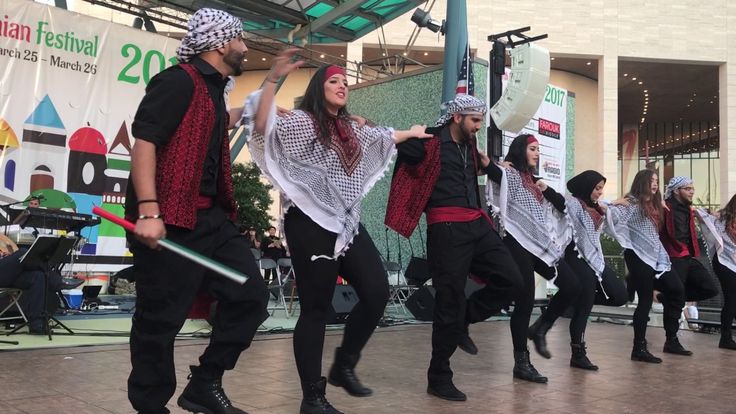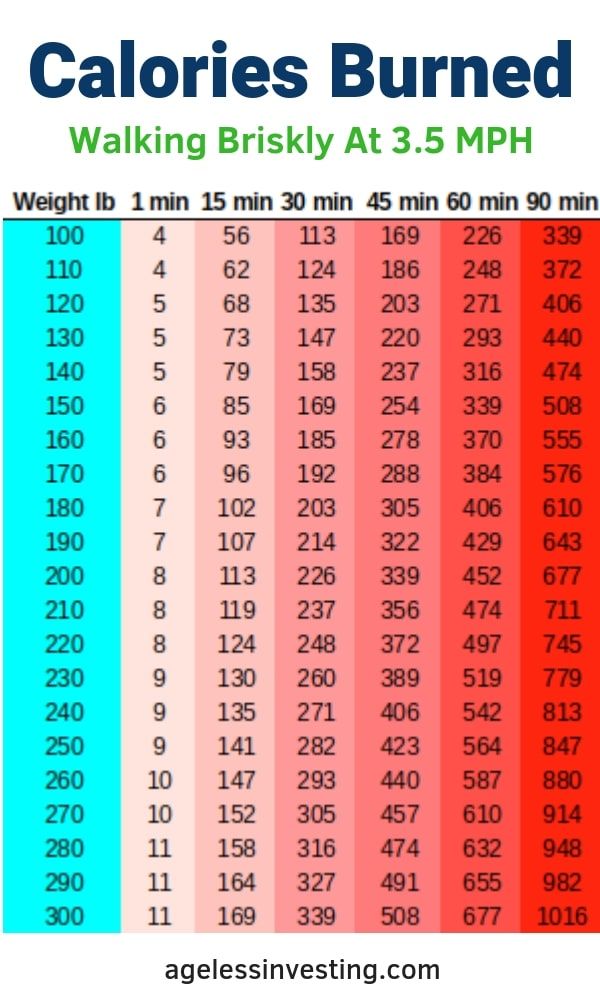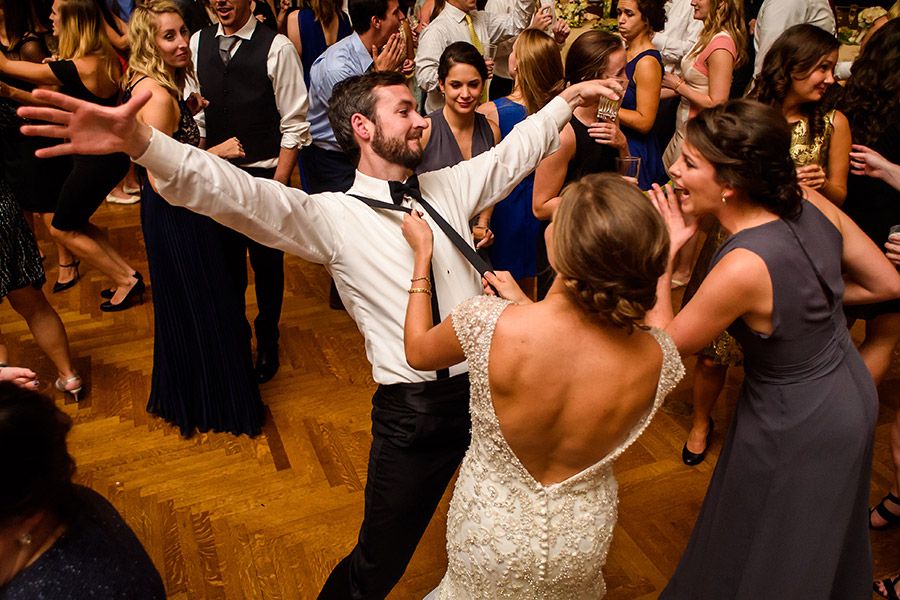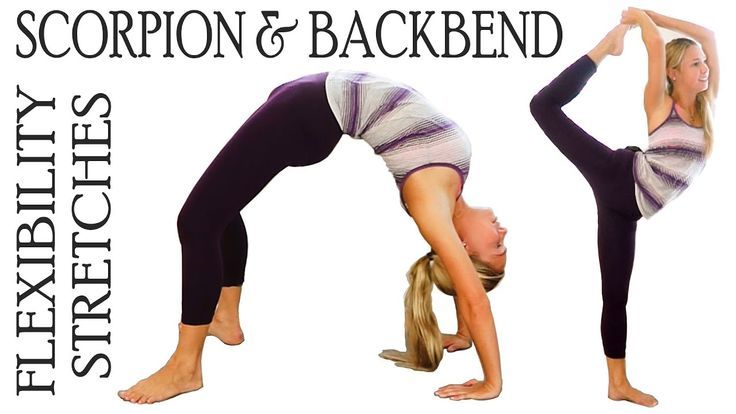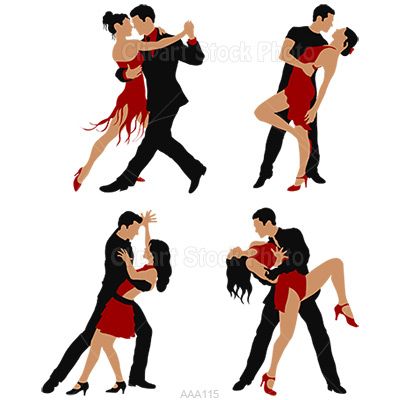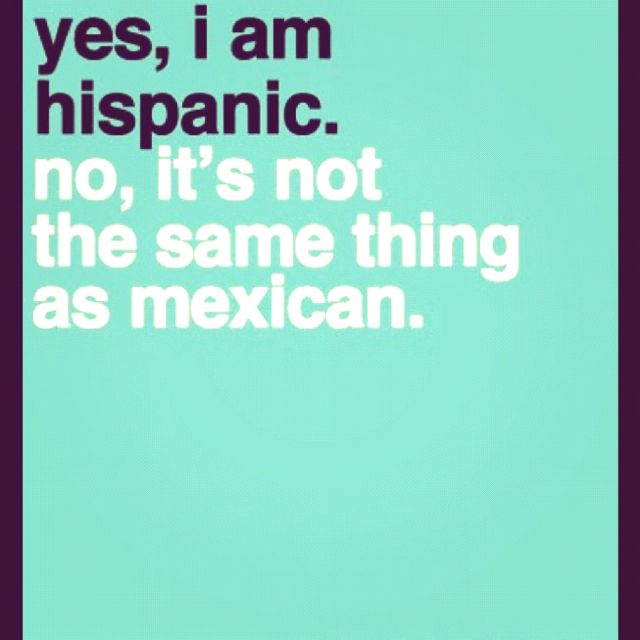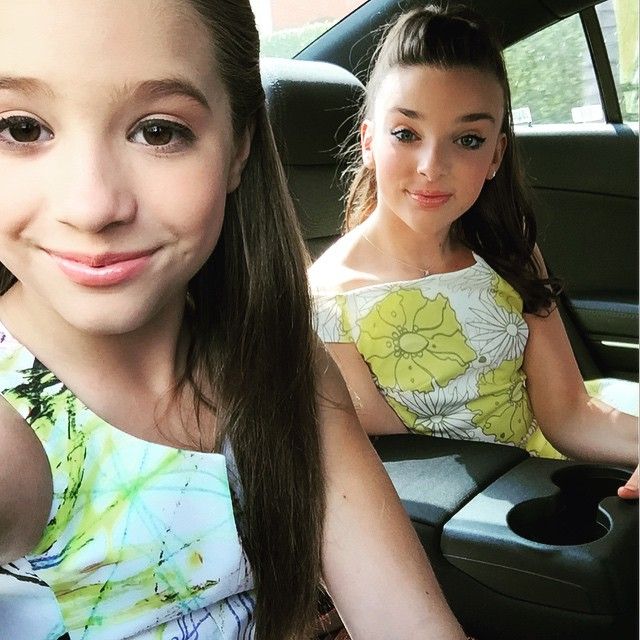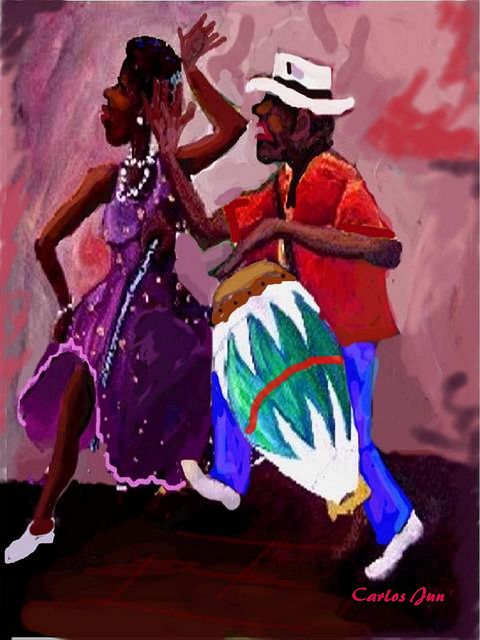How to dance dabke palestinian
Dabke Dance: A Shared Tradition of the Levant
by Johanna Sellman
Dabke (also spelled as Dabka) is an Arabic folk dance which originated in the mountains of the Levantine region. This region in the Middle East includes the countries of Palestine, Lebanon, Jordan, and Syria. Dabke is derived from the Levantine Arabic word dabaka (Arabic: دبكة) meaning “stamping of the feet” or “to make a noise”. The Dabke is a dance where everyone stands in a line holding hands facing outwards or to the audience, if there is an audience. There are many versions of dabke, but the most common one is when the dancers step with the left foot and right foot and then cross the left foot and right foot over. These steps require a small hop as they are done. The dance begins with a song that has a slow introduction in the background, and the dancers start to move together very slowly. When the music begins to speed up, the dancers increase their speed and their footwork becomes more intense. It can get tricky for beginners as the dancers must maintain a synchronized movement- all while keeping up with the same speed as the rest of the group. Usually, the lead person in the dabke is expected to be one of the most skilled in the group of dancers- as he/she is responsible for maintaining the synchronized footsteps and the pace of the group. The leader usually directs the dancers to slow down or speed up and helps keep the energy of the dance. It is very common for the leader to break out of the line by him/herself to do other skilled dances. If you have joined a dabke dance or ever watched a dabke performance, you would see something recurring amongst the people in the dabke dance and those around them. Because dabke is a unifying dance, you will always see people randomly joining (breaking a pairs hands to make room for themselves to join) or someone trying to get other members to join. There are many stories on how dabke began. When first created, the Dabke dance was practiced by people of the villages and towns of Lebanon, Syria, Palestine, and Jordan.
 During those times, the people in these small villages made the roofs of their houses with tree branches and mud. Any weather changes lead to cracking in the mud- often causing leaks and other issues. When this happened, family and community members would come and help patch it by forming a line and joining hands and stomping the mud into place. Over time, the dabka dance was recognized to make the roof work fun. The union of the family and community members was considered a joyful way to keep things in sync and effective. This tradition was passed through generations as a reminder of the importance of family, community, and tradition. We see dabke performances at weddings, and even in the middle of a protest- which is what makes it so special to the hearts of Arabs. As mentioned earlier, dabke is considered a tradition in the Levantine countries. However, the Palestinian people have adopted it into other aspects of their lives. Dabke signifies hope, struggles, and history of the Palestinian people- making it one of the most important cultural forms of art in their culture.
During those times, the people in these small villages made the roofs of their houses with tree branches and mud. Any weather changes lead to cracking in the mud- often causing leaks and other issues. When this happened, family and community members would come and help patch it by forming a line and joining hands and stomping the mud into place. Over time, the dabka dance was recognized to make the roof work fun. The union of the family and community members was considered a joyful way to keep things in sync and effective. This tradition was passed through generations as a reminder of the importance of family, community, and tradition. We see dabke performances at weddings, and even in the middle of a protest- which is what makes it so special to the hearts of Arabs. As mentioned earlier, dabke is considered a tradition in the Levantine countries. However, the Palestinian people have adopted it into other aspects of their lives. Dabke signifies hope, struggles, and history of the Palestinian people- making it one of the most important cultural forms of art in their culture.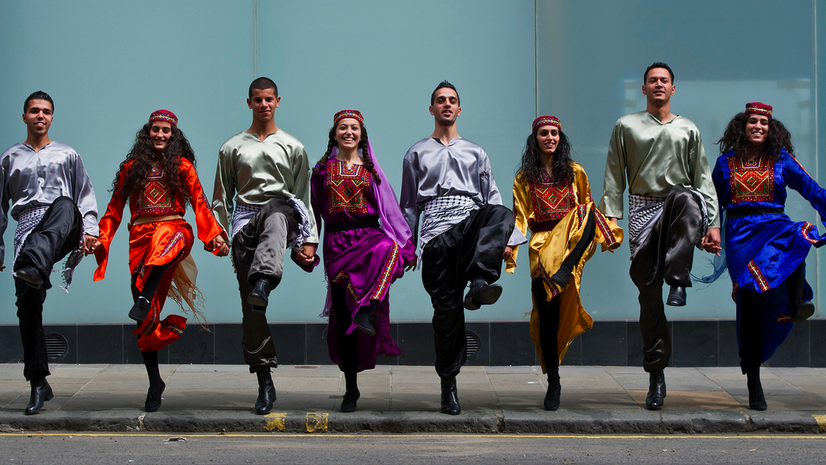 During Palestinian dabke, women wear ‘thobes’ (embroidered long dresses) and men wear pants with wide belts and leather shoes. Men cover their heads with a “keffiyeh” (a scarf), and women cover their heads with a veil hanging loose down their backs. Dabke not only joins us in times of happiness and celebration, but also in times of struggle and political resistance. The core origin of dabke is community and family bonding- which is why we get more family members or audience members to join the line as well. A simple message of locking arms together, stomping to the ground, and singing or chanting has left a deep mark in the culture. Palestinians have taken this to war zones and in the middle of protests because it unifies us against our oppressor. Even when there is a struggle, the dabke dance has given us a chance to look past the political struggle and focus on our traditions and where we come from. The occupation can take the land beneath our feet, but they cannot take the traditions and culture that lives within our hearts.
During Palestinian dabke, women wear ‘thobes’ (embroidered long dresses) and men wear pants with wide belts and leather shoes. Men cover their heads with a “keffiyeh” (a scarf), and women cover their heads with a veil hanging loose down their backs. Dabke not only joins us in times of happiness and celebration, but also in times of struggle and political resistance. The core origin of dabke is community and family bonding- which is why we get more family members or audience members to join the line as well. A simple message of locking arms together, stomping to the ground, and singing or chanting has left a deep mark in the culture. Palestinians have taken this to war zones and in the middle of protests because it unifies us against our oppressor. Even when there is a struggle, the dabke dance has given us a chance to look past the political struggle and focus on our traditions and where we come from. The occupation can take the land beneath our feet, but they cannot take the traditions and culture that lives within our hearts. Although the purpose of dabke originated from just repairing the roof of one’s house or a neighbor’s house, it has revolutionized into a symbol of love, life, and struggle.
Although the purpose of dabke originated from just repairing the roof of one’s house or a neighbor’s house, it has revolutionized into a symbol of love, life, and struggle.
Stepping into the World of Dabke! – PaliRoots
Figure 1 Palestinian Female Dabke Dancers
Wala dalouna w ala dalouna…I’m sure you’ve heard those catchy lyrics at Arab weddings and in various Palestinian folk songs and chants. You’re probably finishing the rest of the song at this point. The phrase ala dalouna came to be when builders and villagers used to form a line and join hands to stomp cracked mud into place when the weather damaged the roofs of their houses. This patching work was done to prevent rain from seeping in on stormy days. The joint effort needed to achieve this communal task is ta’awon (cooperation), from which the Arabic word awneh (help) is derived from. This event developed into the popular dabke song titled “Ala Dalouna,” roughly translated to “Let’s go and help. ” In this case, the legwork needed to compact the roofs is what we now call the popular Levantine folk dance—dabke—which literally means “stamping of the feet” in Arabic.
” In this case, the legwork needed to compact the roofs is what we now call the popular Levantine folk dance—dabke—which literally means “stamping of the feet” in Arabic.
The dabke and folk songs kept work in the village enjoyable. Today, dabke reminds Palestinians of community, cooperation, and solidarity; we perform it worldwide at weddings, family gatherings, and celebrations. It’s an energetic dance that combines circle and line dancing, different levels of footwork, spins, and tricks. Today there are over twenty variations of dabke in different Arab countries, including Palestine, Lebanon, Iraq, Syria, Jordan, Saudi Arabia, and Yemen.
Palestinian Dabke Troupe at Wedding:https://www.youtube.com/watch?v=y9Fhc8bZXt4
Amongst Palestinians, the two most common types of dabke are the shamaliyya and sha’rawiyya (six measure phrases). Al-Shamaliyya is the most famous and incorporates the typical dabke step—left foot crossing over the right foot two times—and different hops. The lawweeh, or leader, heads the line of men and controls the tempo/energy. He/she is expected to synchronize the dancers and be light on his/her feet and accurate. Typically, the lawweeh breaks from the line and dances in the center or switches places to show off more moves. He/she is identified by a handkerchief or a masbha (string of beads) in their hand, which they use to keep the dancers’ rhythm. Al-Shamaliyya is typically peformed at weddings, family celebrations, the release of prisoners, and national holidays. Al-Sha’rawiyya is limited to men and is characterized by stomps/strong steps; the laweeh is the most important element in this form of dabke (Wikipedia).
The lawweeh, or leader, heads the line of men and controls the tempo/energy. He/she is expected to synchronize the dancers and be light on his/her feet and accurate. Typically, the lawweeh breaks from the line and dances in the center or switches places to show off more moves. He/she is identified by a handkerchief or a masbha (string of beads) in their hand, which they use to keep the dancers’ rhythm. Al-Shamaliyya is typically peformed at weddings, family celebrations, the release of prisoners, and national holidays. Al-Sha’rawiyya is limited to men and is characterized by stomps/strong steps; the laweeh is the most important element in this form of dabke (Wikipedia).
https://m.youtube.com/watch?v=ssTcNpaRTQE
Some of the most popular dabke songs are actually entire genres in themselves. Ala Dalouna is one example of this since in each performance, the lyrics will differ, but the flow of the music is familiar and constant throughout the entire process.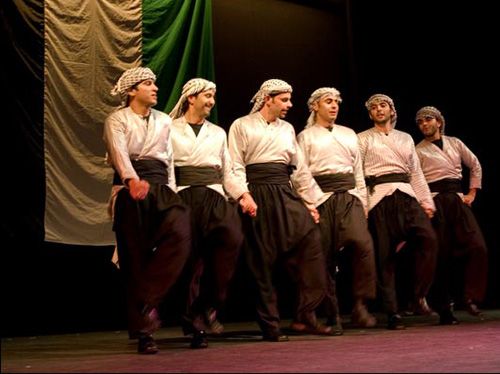 Some other popular genres are Al Jafra, Al Dahiyya, and Zareef il-Tool. The dominant theme of the dabke song genres is often love. The dabke music typically contains the oud, mijwiz, tablah, daff, and yarghoul instruments (see The Sounds of Palestine article for more details on these).
Some other popular genres are Al Jafra, Al Dahiyya, and Zareef il-Tool. The dominant theme of the dabke song genres is often love. The dabke music typically contains the oud, mijwiz, tablah, daff, and yarghoul instruments (see The Sounds of Palestine article for more details on these).
In America, the tradition has not been lost and can be seen performed by professional troupes at weddings, cultural organizations at universities, parties, festivals, and conventions. Dabke has united Arabs across nations and generations and is our go-to move for burning up the dance floor!
Houston Palestine Festival 2017:https://www.youtube.com/watch?v=Q_lw9JDPqD0
Jerusalem Dabke Group:https://www.youtube.com/watch?v=sXGOHYqC1Rc
Sources:
https://kaleela.com/how-to-spot-the-different-types-of-dabke-dancers/
https://www.arabamerica.com/dabke-cultural-background-preparing-arab-american-wedding-season/
https://stepfeed.
com/9-types-of-dabke-dancers-you-ll-encounter-at-an-arab-wedding-9558
https://blogs.transparent.com/arabic/dabke/
https://en.wikipedia.org/wiki/Dabke#cite_ref-layla_10-0
About the Writer: Tasneem Ibrahim is an engineer by day and a bookworm by night. She loves to write, travel, cook, watch movies, and spend time with her family in her free time. Her roots run deep in the Palestinian village of Sinjil. I think that it would do the general public good to educate themselves on our peoples’ rich history and culture.
Knafeh with a pinch of dabke: Bearded Bakers promote Palestinian culture in Australia
Knafeh with a pinch of dabke: Bearded Bakers promote Palestinian culture in Australia | IslamosphereNews
Enchanted Dervish
The Bearded Bakers are a group of brutal Arab-Australians who seek to break Palestinian stereotypes through dessert and dance, writes Elias Jahshan.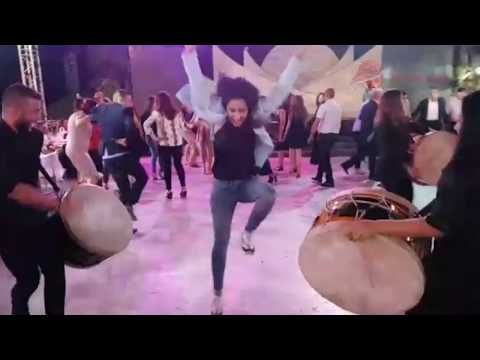
Brothers Amir and Jawad (Joey) al-Issa, commonly known as the "Bearded Bakers", started their business in late 2014 to promote Palestinian culture and overcome negative stereotypes. In five years, they and their troupe of bearded, white-robed bakers have amassed a huge following on social media. They tour in an old van converted into a bakery, and there's only one item on the menu: knafe. But the limitations of the menu are more than made up for not only by the quality of the dessert, but also by the show, as the culinary theater also awaits the audience. Knafeh is a traditional Palestinian dish that is believed to have originated in the Palestinian city of Nablus and spread from there to the rest of the region. It is prepared from Kadaif vermicelli and goat cheese with the addition of syrup.
A mobile bakery operates at a new location every weekend. Arabic music is played over the sound system, the bakers occasionally start dancing, often a traditional Arabic dance, the dabke, and customers are encouraged to join in.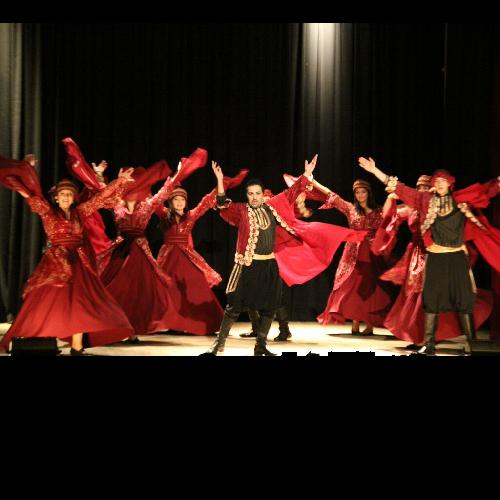
Adventures of New Zealanders in Moroccan Fez.
The brothers Amir and Jawad (Joy) al-Issa / Source: dailytelegraph.com.au
The brothers and their mobile bakery Knafeh were featured in newspapers and on national television. They had an "incredible" tour in New York in 2017 and toured Lebanon, although the idea was met with skepticism at first. “You are going from Australia to Lebanon, a country where they make really good knafe,” they were told. Nevertheless, the brothers were waiting for success.
According to the al-Issa brothers, the idea for the Knafeh mobile bakery came about after demand for a traditional Arabic dessert served at their family restaurant, Shisha Bar, became hype.
“We started experimenting with Middle Eastern ingredients and family recipes, and one of them was my mom's knafe,” recalls Amir. “We put it on the menu and it was an instant hit.” It must be said that the knafe prepared by the brothers is somewhat different from the traditional one, and is based on a family recipe that is kept secret.
Life on the “Muslim street” of Seoul.
When a queue began to gather near the restaurant, Amir, who had long been attracted by containers with their conceptuality, put forward the idea of creating a mobile bakery.
The al-Issa brothers work with global brands such as Lamborghini and Mercedes. At the time of writing, they were about to launch a partnership with UNICEF Lebanon to inspire underprivileged children in the country.
Joey al-Issa at work / Source: dailytelegraph.com.au
Looking to the future, Amir says that they are planning to return to New York, but they attach much more importance to promoting their project in Palestine. “It's just a matter of time before we return to our homeland,” he says.
According to him, no one expected the Knafeh bakery project to grow to its current size and scope. But what he is most proud of is that it gives them the opportunity to promote Palestinian culture.
A village where only women live.
“We need to show what our culture has to offer to the world, to demonstrate its beauty,” says Amir. “It is manifested in food, in hospitality, in love for people. In passion to entertain and receive guests. When you come to the Knafeh bakery, it's like we welcome you to our home, that's our culture."
“And you know, we're proud to be Palestinians,” he adds.
Source: dailytelegraph.com.au
Knafé / Source: dailytelegraph.com.au
Islamosphere
All articles on this topic
Popular videos
At the festival in Volgograd, children danced a Palestinian folk dance: Earth is the planet of children! - Culture
Culture
October 24, 2019, 21:07Test account, 847
Festival-competition "Earth is the planet of children!" passed in Volgograd. In the Central Concert Hall, the participants - laureates of international, all-Russian and regional championships - showed their best performances, and specialized experts evaluated them for originality and professionalism. The Regional Children's Philharmonic holds a competition-festival within the framework of the national project "Culture".
Dabka is one of the symbols of the folk culture and folklore of Palestine. Traditional dance - jumps and movements reminiscent of tap dancing. Dabka is filled with temperament, incendiary and does not leave any spectator indifferent! And the pupils of the choreographic ensemble "Tantsklass" added their own zest to it.
Sofia Asainova, pupil of the choreographic ensemble "Tantsklass":
- Dabka is generally an oriental dance, but we have slightly altered it into a folk dance, added new movements and so on.
First they prepared some passages, and then they put it together. We performed for the first time with this dance in the summer, we went to a competition in Kuchugury.
Vika Skvortsova loves to dance since childhood. And the sounds of music never leave her indifferent. At the end of school, the girl dreams of becoming a teacher-choreographer. Vika is sure that it is never too late to learn to dance, and such competitions allow you to find new friends, share experiences and learn something new. In the gala concert of the regional festival "Earth - the planet of children!" 14 winning teams from Volgograd, Volzhsky and districts of the region performed.
Victoria Skvortsova, member of the Zabava choreographic ensemble:
– The atmosphere is great, everyone here is very friendly, cheerful, I want to come here again and again. We were lucky to participate in this competition, our ensemble is very happy about it, there is a very good jury, they say, and we hope to win.

The cultural life of Volgograd does not stand still. Many bright and colorful creative events, exhibitions and events take place in the regional capital and throughout the region. The authorities of the region pay great attention to the development of this direction.
Elena Evdokimova, Deputy Chairman of the Committee of Culture of the Volgograd Region:
- We hold a huge number of events for children, with the participation of children. Including, these are performances and concerts, these are also competitions where they can perform, prove themselves, exchange experiences, receive a master class from leading teachers of the Volgograd region.
The efforts of young talents are evaluated not only by the applause of the audience and honorary awards, but also by the financial support of the leadership of the Volgograd region. October 30 at the Conservatory. Serebryakov, the Governor's scholarships will be awarded to gifted children in the field of culture and art.